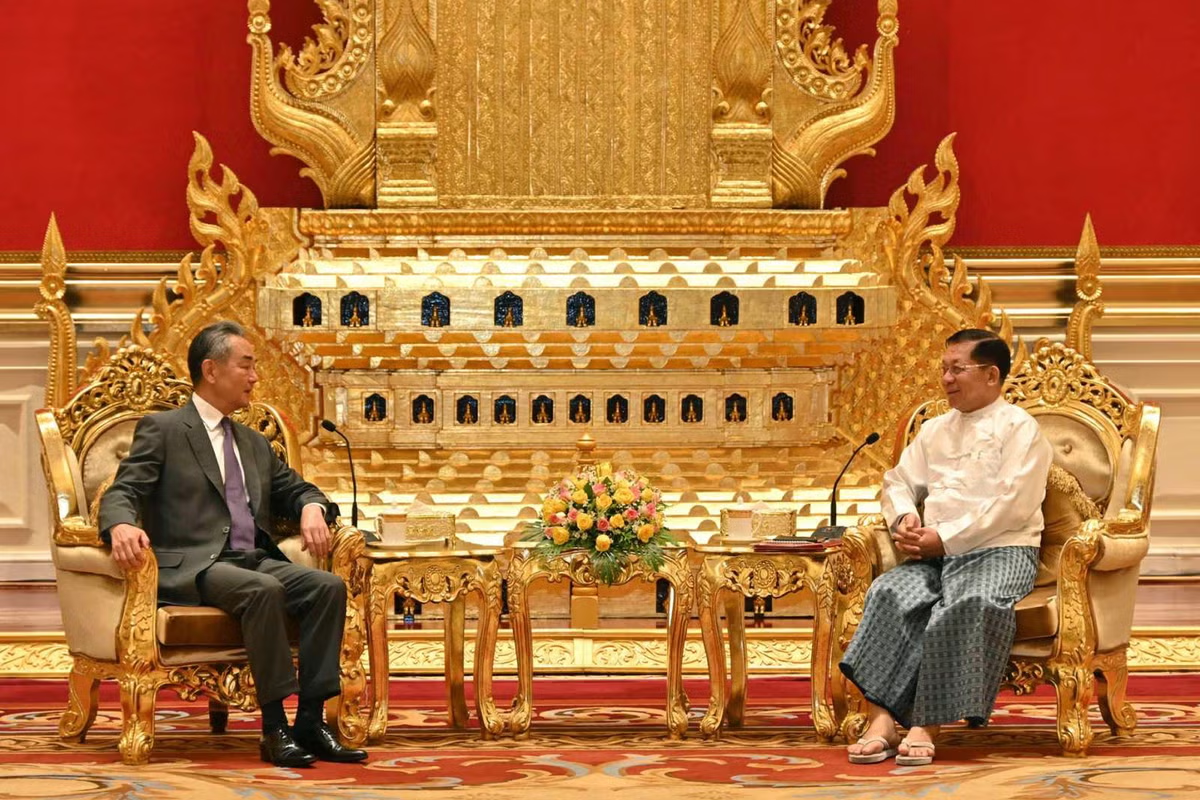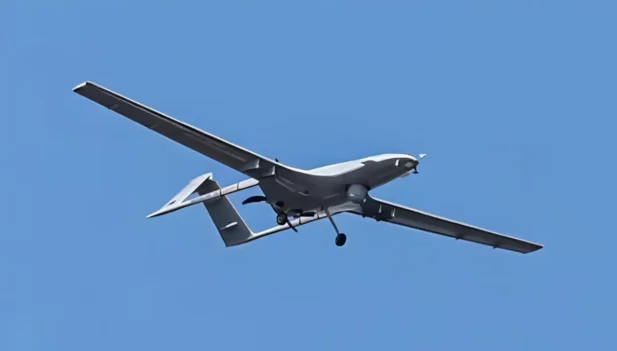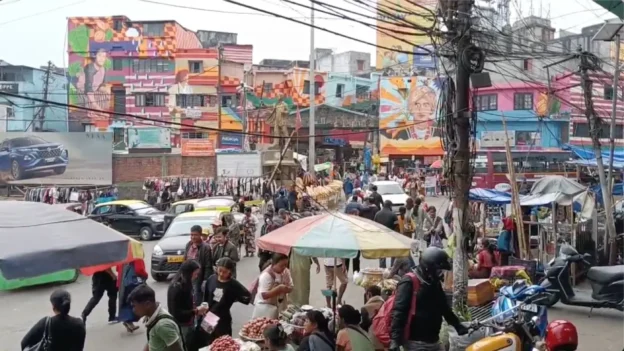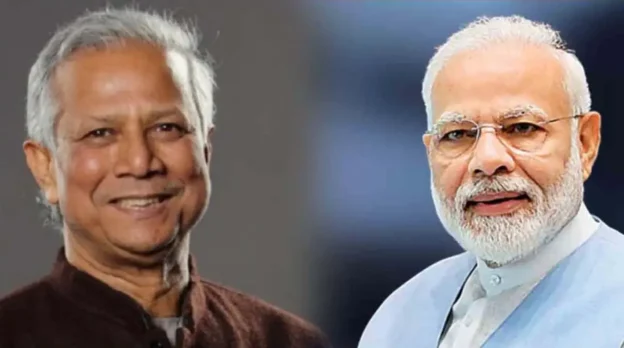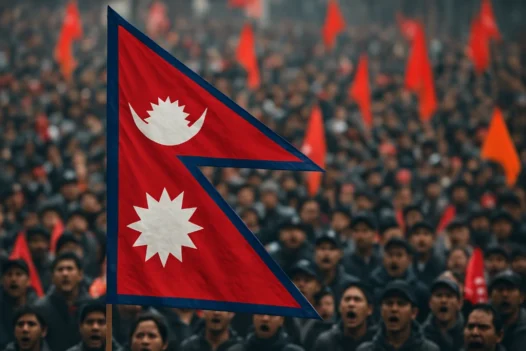Speculations about China’s growing involvement in Myanmar’s political crisis are proving accurate, as Beijing takes decisive steps towards influencing the situation. China’s Foreign Minister Wang Yi, who recently visited Myanmar, confirmed Beijing’s support for the military regime’s plan to hold elections, a move that aligns with China’s broader strategic objectives in the region.
During his visit to Naypyidaw from August 14 to 15, Wang Yi met with Senior General Min Aung Hlaing and other top officials of the State Administration Council (SAC). Wang was accompanied by a high-level delegation, including China’s Ambassador-designate to Myanmar, Vice-Minister of Foreign Affairs Sun Weidong, and Special Envoy for Asian Affairs Deng Xijun.
The Chinese delegation reiterated China’s backing for Myanmar’s internal political reconciliation under the constitutional framework, emphasising the importance of holding national elections and restarting the democratic transition process. Wang Yi also voiced China’s opposition to external interference in Myanmar’s political affairs.
These diplomatic engagements followed a significant event on August 3, when the Myanmar National Democratic Alliance Army (MNDAA) seized control of the Regional Military Command (RMC) headquarters in Lashio, Shan State. The timing of Wang Yi’s visit, along with the earlier visit of Special Envoy Deng Xijun on August 8, suggests a strategic response to this development, highlighting China’s increasing involvement in Myanmar’s internal conflicts.
China’s Foreign Minister Wang Yi expressed support for the SAC’s five-point roadmap, which aims to ensure peace, stability, and development in Myanmar, including preparations for a free and fair multiparty democratic election. The Chinese delegation emphasised the need for cooperation between the two countries, particularly in maintaining peace and stability in the border regions, combating online gambling and other illicit activities, and fostering internal peace within Myanmar.
China’s approach to Myanmar has always been characterised by a dual strategy, balancing its relations with the military junta and various ethnic armed organizations (EAOs). However, the current situation is more unpredictable and complex than previous interventions. Insights from various stakeholders, including representatives from the National Unity Government (NUG), the National Unity Consultative Council (NUCC), and other political and rebel groups, reveal Beijing’s multifaceted involvement in Myanmar’s conflict.
China’s recent actions, such as brokering a ceasefire in northern Shan State, underscore its strategic interest in maintaining stability along its borders. Beijing aims to prevent any escalation of the conflict that could disrupt its traditional strategy of engaging with all factions, including the military junta. Reports indicate that China has encouraged the United Wa State Army (UWSA) to take a more active role, evidenced by the UWSA’s recent movements in Lashio. Although the UWSA claims its presence is solely for protecting its liaison offices and property, observers see this as part of a broader Chinese strategy.
The UWSA, with its strong ties to the Federal Political Negotiation and Consultative Committee (FPNCC) and other Northern Alliance members, plays a crucial role in China’s plans for Myanmar. While the UWSA and FPNCC are not traditional allies, their relationship is closer than that of ordinary peers, with shared threats and interests binding them together. China’s engagement with these groups, including the Arakan Army (AA), Kachin Independence Army (KIA), and others, reflects its comfort in working with these entities compared to the military junta, which Beijing has criticised for enabling cybercrime along the border.
In contrast, China remains wary of the NUG and its allies, viewing them as too closely aligned with Western interests and democratic ideals. Despite this, the NUG continues to pursue its goal of establishing a federal democratic structure, even as it acknowledges China’s preference for working with the junta and certain EAOs to negotiate a ceasefire and facilitate elections.
Several smaller groups, such as the Shan State Army North (SSA-N), Shan State Army South (SSA-S), Pa-O National Army (PNA), and Shanni Nationalities Army (SNA), are likely to align with the junta in the event of an election and the reactivation of the National Ceasefire Agreement (NCA). These alliances further complicate the landscape of Myanmar’s internal conflict, where China’s influence looms large.
China’s involvement in Myanmar is driven by its long-term policy of ensuring a pro-Beijing regime in Naypyidaw. This policy is motivated by the need to prevent instability along its borders, protect its investments, particularly in Rakhine State, and avoid conflicts in northern Shan that could jeopardise its strategic interests. An unstable Myanmar could lead to refugee crises, cross-border crimes, and threats to Beijing’s influence in the region. Therefore, China is committed to engaging with all stakeholders in Myanmar to maintain stability and safeguard its borders.
While China’s strategy in Myanmar may appear contradictory and lacking cohesion, it is clear that Beijing is pushing the SAC leadership to develop a “bail-out” plan, with elections being the top priority. At the same time, China is urging dialogue between the SAC and EAO leaders to reach a consensus on holding elections. Beijing’s reluctance to take sides and its continued engagement with all factions—including the NUG, junta, and various EAOs—suggests that China will play a significant role in shaping the future direction of Myanmar’s conflict.
Despite its diplomatic overtures, China’s involvement in Myanmar is not without controversy. Reports indicate that arms, ammunition, and sophisticated equipment from China continue to flow to Myanmar’s junta and rebel groups through various channels, particularly via Thailand. The Golden Triangle, a notorious hub for illegal trade, remains a significant conduit for these activities, making it difficult to halt the flow of weapons and money fuelling the conflict.
China’s actions in Myanmar reflect a blend of strategic foresight and opportunism. By promoting stability along its borders, fostering economic ties with select ethnic groups, and navigating the complex political landscape in Myanmar, Beijing maintains its influence while preparing for future developments. As Myanmar’s conflict evolves, China’s role as a key player will likely become even more pronounced, shaping the country’s political and security landscape for years to come.

